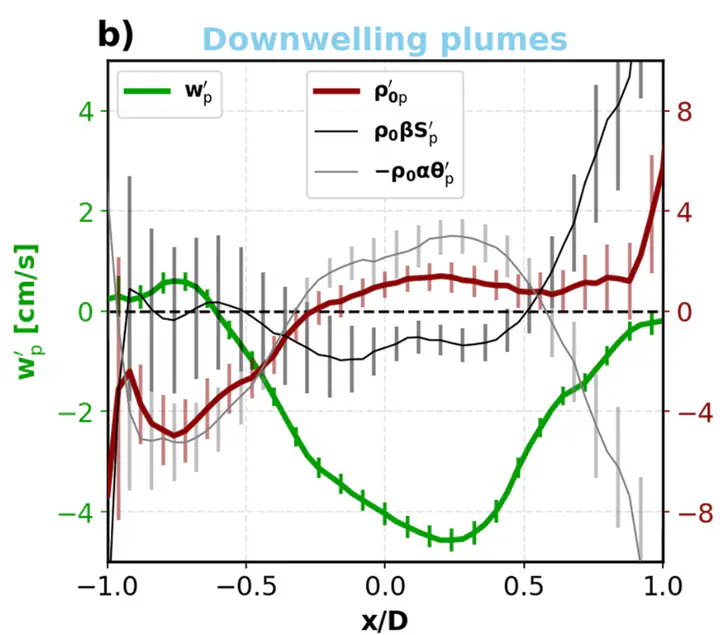
Abstract
Turbulent vertical velocity measurements are scarce in regions prone to convection such as the Labrador Sea, which hinders our understanding of deep convection dynamics. Vertical velocity, w $w$, is retrieved from wintertime glider deployments in the convective region. From w $w$, downward convective plumes of dense waters are identified. These plumes only cover a small fraction of the convective area. Throughout the convective area, the standard deviation of w $w$ agrees with scaling relations for the atmospheric surface and boundary layers. It initially depends on surface buoyancy loss in winter, and later, on wind stress after mid-March. Both periods are characterized by positive turbulent vertical buoyancy flux. During convective periods in winter, the positive buoyancy flux is mostly forced by surface heat loss. After mid-March, when buoyancy loss to the atmosphere is reduced, the positive buoyancy flux results from a restratifying upward freshwater flux, potentially of lateral origins and without much atmospheric influence.